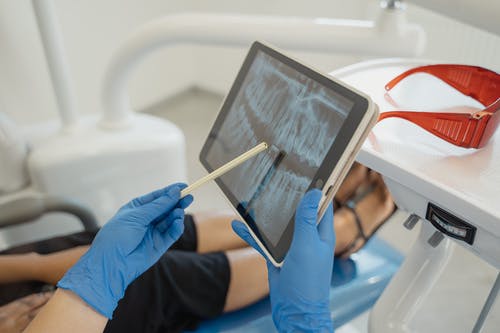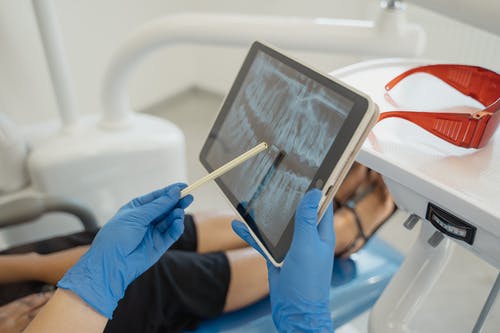Orthodontic treatment is not limited to teens or adults; children have also been considered ideal candidates for early orthodontic intervention in recent years. Children seldom complain about crooked teeth or bad bites, which shouldn’t deter parents from deciding on early orthodontics.
Pediatric Dentistry
Specialized dental services like those offered at Children’s Dentistry of Lakewood Ranch are dedicated to promoting oral health in children. From regular check-ups to treatment for dental issues, this domain focuses on preventive care and fostering good oral hygiene habits early in a child’s life.
Understanding Early Orthodontic Treatment
Early orthodontic treatment, also known as interceptive or Phase 1 orthodontic treatment, is a specialized approach to addressing orthodontic issues in children at a young age. This type of treatment typically begins around the ages of 6 to 10, when a child still has a mix of primary (baby) and permanent teeth. The process of early orthodontic treatment involves:
- Evaluation: An orthodontist will assess the child’s dental and facial development using X-rays, photographs, and sometimes dental impressions to identify any current or potential issues.
- Customized Treatment Plan: Based on the evaluation, the orthodontist will create a personalized treatment plan that outlines the specific orthodontic appliances and techniques needed to address the child’s unique concerns.
- Appliance Use: Common appliances used in Phase 1 treatment include braces, expanders, space maintainers, and specialized aligners. These appliances work to guide jaw growth and manipulate tooth positioning.
- Monitoring: Throughout the treatment process, the orthodontist will schedule regular check-ups to monitor progress, adjust appliances if needed, and ensure that the treatment is progressing as planned.
When Is Early Orthodontic Treatment Needed?
Here are some common situations where early orthodontic treatment might be needed:
- Bite Problems (Malocclusions): Children with severe overbites, underbites, crossbites, or open bites might benefit from early orthodontic intervention. Correcting these bite issues during the mixed dentition phase can prevent further complications and guide proper jaw growth.
- Crowding and Spacing Issues: If a child’s permanent teeth come in crowded or with excessive spacing, early orthodontic treatment can create adequate space for the teeth to come in properly. This can help prevent more severe crowding or misalignment in the future.
- Protruding Front Teeth: Children with prominent front teeth might be at risk of injuring their teeth in accidents. Early orthodontic treatment can help move these teeth into a safer position.
- Habits that Impact Development: Thumb sucking, tongue thrusting, and prolonged pacifier use can affect teeth alignment and jaw development. Early orthodontic treatment can help break these habits and guide proper growth.
- Crossbites and Narrow Arches: Crossbites (when upper and lower teeth don’t meet correctly) and narrow dental arches can lead to bite problems and potential jaw issues. Early treatment can correct these problems before they worsen.
- Speech and Chewing Problems: Orthodontic issues can sometimes contribute to speech difficulties and problems with chewing and eating. Early intervention can help address these functional concerns.
- Harmful Oral Habits: Harmful oral habits like thumb sucking or tongue thrusting can affect the development of teeth and jaw alignment. Early orthodontic treatment can help eliminate these habits and minimize their impact.
- Impact on Facial Aesthetics: Certain orthodontic issues can impact a child’s facial aesthetics as they grow. Early intervention can help guide facial growth and development to achieve a more balanced and harmonious appearance.
Advantages of Early Orthodontic Treatment
1. Proactive Correction of Dental Issues
Early orthodontic treatment allows for proactively correcting dental issues while a child’s oral structures are still developing. Problems like protruding front teeth, severe underbites, or overbites can be addressed more simply and effectively during childhood. Taking action early can minimize potential complications, leading to a healthier and more harmonious oral alignment.
2. Improved Self-Confidence
Misaligned teeth or noticeable bite problems can significantly impact a child’s self-esteem and confidence. Children’s orthodontics treatment can transform a child’s smile, helping them feel more comfortable and positive about their appearance as they grow older. This boost in self-confidence can positively influence their social interactions and overall well-being.
3. Lessens Extensive Treatment Later
Addressing orthodontic issues during childhood often prevents the need for more extensive and complicated treatments in the future. Early intervention takes advantage of the child’s growing jaw and teeth, making adjustments and corrections easier and potentially less invasive. This can lead to shorter treatment times and less discomfort for the child.
4. Proper Growth and Development
Early orthodontic treatment contributes to the proper growth and development of the jaw and facial structures. By guiding the growth of the jawbones and influencing the positioning of teeth, Phase 1 treatment creates an optimal environment for permanent teeth to erupt into their intended positions. This can prevent future crowding and misalignment.
5. Prevents Potential Health Issues
Certain orthodontic issues can lead to oral health problems later in life if left untreated. Misaligned teeth can be harder to clean, increasing the risk of tooth decay and gum disease. Also, malocclusions (bite problems) can lead to speech, chewing, and jaw pain. Early treatment helps prevent these potential complications.
6. Better Functional Alignment
Addressing orthodontic issues early on ensures that the teeth and jaws are properly aligned for optimal function. This can positively affect chewing, speech development, and overall oral function.
7. Time and Cost Savings
Early orthodontic treatment can lead to shorter treatment times and potentially lower costs. Addressing issues before they become more complex can save time and money in the long run.
8. Positive Psychological Impact
A well-aligned smile improves physical health and has a positive psychological impact. Children who undergo early orthodontic treatment often feel more confident and comfortable in their interactions with peers and adults.
Choosing a trusted dental center specializing in pediatric dentistry is crucial to ensuring children receive appropriate care. These dental centers are equipped to handle various dental procedures for children, providing a friendly and comfortable environment.
Conclusion
Early orthodontic treatment in children yields numerous benefits, aiming to set the foundation for a lifetime of healthy smiles. Pediatric braces, children’s orthodontics, and a trusted dental center all contribute significantly to a child’s oral health. By identifying and managing dental problems early, parents can help their children avoid more serious issues later in life. Consider early intervention not as an expense but as a worthwhile investment in your child’s smile.




